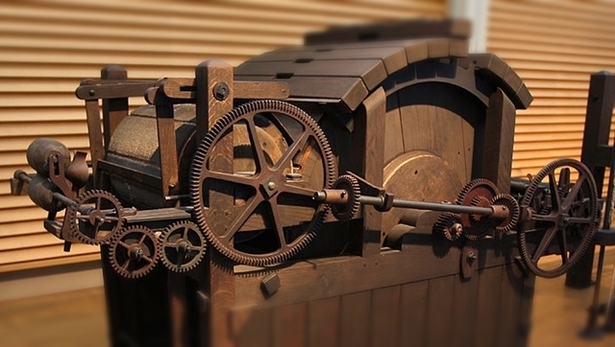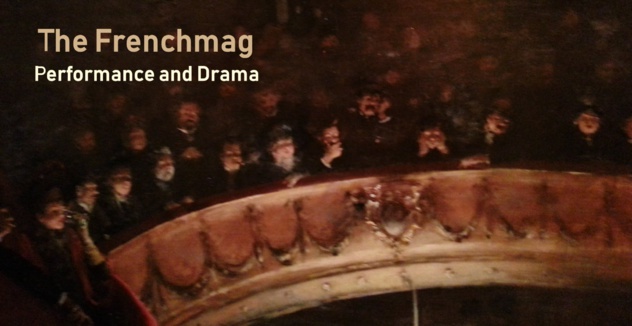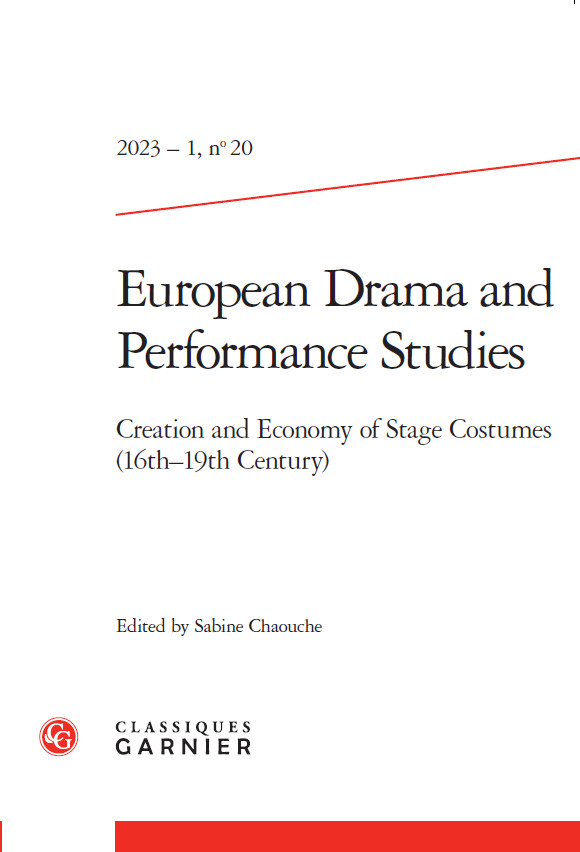
credit: Morio
Ticket orders also suggest that the actors were confident and believed in prosperity. The number of pre-printed tickets increased dramatically in the 1770s. While they would order an average of 3,400 tickets per month in 1771 for the boxes rented annually, seven years later they ordered an average of 4,833 tickets per month (despite the rise of paper in August 1771). In 1782, the number of tickets reached 5 400. Besides, on top of this, thousands of seats and pit tickets were also ordered. The Comédie-Française was well managed since annual membership was a way to secure money in advance and thus have cash flow. The rise in orders was a gamble but it never led to bankruptcy.
Actors were very aware of their expenses, and always looked for bargains. They tried to deal with as much as possible with suppliers who could deliver the best but also cheapest products: in June 1762, Lekain required that fabrics which were to be bought at Saurin’s be “best value for money”. On the other hand actors could sometimes contest invoices to get them reduced. They haggled over the price of goods or services. A memoir sent by Paul Brunetti in autumn 1759 relating to the preparation of new sets was discussed. A down payment had been agreed. The company had paid a deposit of 5,500 liv. (out of 8,305 liv.). Brunetti demanded an extra 2,000 liv. deposit for the first sets. The actors considered that cost were exaggerated and asked that they be reassessed. They negotiated the quote provided by Brunetti who had to justify the rates relating to the two sets he had not yet made (the Palace and the Temple). The problems were solved since Paul Brunetti remained the official painter-and-decorator of the Comédie-Française for the next twenty-one years.
Bills were systematically moderated and importantly reduced in a 10% to 25% range (e.g. in May 1763 he charged 4,161 liv. for the full or partial creation of twelve sets but finally accepted to be paid 3,000 liv. only ). Most of the time actors maintained a good relationship with suppliers who could be granted a monopoly and become regular providers such as for instance Delormel, printer in the 1750s, Dosseur, Le Prince and Trudon who supplied oil and candles in the 1760s or Rougeault linen shopkeeper in the 1780s. I have listed 125 suppliers between the 1750s and the 1790s. Obviously their number remains incomplete since it is not possible know whether all the orders and bills were kept (some may have been lost during the Revolution when the company split).
Suppliers can be divided in different classes: lighting (14); fabrics from haberdashers, linen shopkeepers, marchandes de mode, carpet shopkeepers, silk manufacturers (26); furnishing fabrics (one); clothes from tailors or dressmakers (seven); printing and stationary (six); maintenance of the playhouse including work by builders, scrap merchants, wood suppliers, carriers (15); food from caterers (17); various supplies by watchmakers, jewellers, chemists, foundry workers, gilders, basket makers or cleaners (33) and finally goods or services provided by firework manufacturers, painters, machines makers (four). The Comédie-Française had therefore different types of suppliers depending on the service or product ordered. Minor suppliers would respond to occasional or very specific demands. Orders could relate to repairs (e.g.: chandeliers, swords, hunting knives, shields, sabres); particular goods (e.g.: stays – baleines de corset -, laces, pins, little bells, headdress, clock, stoves).
Home deliveries could be very fast. A bill from the cloth manufacturer Curmer Neilson, relating to the first performance of La Discipline militaire du nord (a new play created in November 1781) suggests that a huge quantity of fabrics was delivered several times within a few hours later, and on rare occasions the day after (bill: 18 and 20 October, 4, 5, 9, 10 and 11 November). Suppliers were keen on accommodating their client. Hence some goods would sometimes be returned and actors could get a refund, or some product such as the end bits of candles (les gratures de vieilles cires) would be recycled and given back to the supplier. Their value would be deducted from the next bill.
Securing trade with the Comédie-Française was indeed profitable. It was a way of getting constant new orders and thus ensuring the growth of the manufacture.
Sabine Chaouche
Actors were very aware of their expenses, and always looked for bargains. They tried to deal with as much as possible with suppliers who could deliver the best but also cheapest products: in June 1762, Lekain required that fabrics which were to be bought at Saurin’s be “best value for money”. On the other hand actors could sometimes contest invoices to get them reduced. They haggled over the price of goods or services. A memoir sent by Paul Brunetti in autumn 1759 relating to the preparation of new sets was discussed. A down payment had been agreed. The company had paid a deposit of 5,500 liv. (out of 8,305 liv.). Brunetti demanded an extra 2,000 liv. deposit for the first sets. The actors considered that cost were exaggerated and asked that they be reassessed. They negotiated the quote provided by Brunetti who had to justify the rates relating to the two sets he had not yet made (the Palace and the Temple). The problems were solved since Paul Brunetti remained the official painter-and-decorator of the Comédie-Française for the next twenty-one years.
Bills were systematically moderated and importantly reduced in a 10% to 25% range (e.g. in May 1763 he charged 4,161 liv. for the full or partial creation of twelve sets but finally accepted to be paid 3,000 liv. only ). Most of the time actors maintained a good relationship with suppliers who could be granted a monopoly and become regular providers such as for instance Delormel, printer in the 1750s, Dosseur, Le Prince and Trudon who supplied oil and candles in the 1760s or Rougeault linen shopkeeper in the 1780s. I have listed 125 suppliers between the 1750s and the 1790s. Obviously their number remains incomplete since it is not possible know whether all the orders and bills were kept (some may have been lost during the Revolution when the company split).
Suppliers can be divided in different classes: lighting (14); fabrics from haberdashers, linen shopkeepers, marchandes de mode, carpet shopkeepers, silk manufacturers (26); furnishing fabrics (one); clothes from tailors or dressmakers (seven); printing and stationary (six); maintenance of the playhouse including work by builders, scrap merchants, wood suppliers, carriers (15); food from caterers (17); various supplies by watchmakers, jewellers, chemists, foundry workers, gilders, basket makers or cleaners (33) and finally goods or services provided by firework manufacturers, painters, machines makers (four). The Comédie-Française had therefore different types of suppliers depending on the service or product ordered. Minor suppliers would respond to occasional or very specific demands. Orders could relate to repairs (e.g.: chandeliers, swords, hunting knives, shields, sabres); particular goods (e.g.: stays – baleines de corset -, laces, pins, little bells, headdress, clock, stoves).
Home deliveries could be very fast. A bill from the cloth manufacturer Curmer Neilson, relating to the first performance of La Discipline militaire du nord (a new play created in November 1781) suggests that a huge quantity of fabrics was delivered several times within a few hours later, and on rare occasions the day after (bill: 18 and 20 October, 4, 5, 9, 10 and 11 November). Suppliers were keen on accommodating their client. Hence some goods would sometimes be returned and actors could get a refund, or some product such as the end bits of candles (les gratures de vieilles cires) would be recycled and given back to the supplier. Their value would be deducted from the next bill.
Securing trade with the Comédie-Française was indeed profitable. It was a way of getting constant new orders and thus ensuring the growth of the manufacture.
Sabine Chaouche




